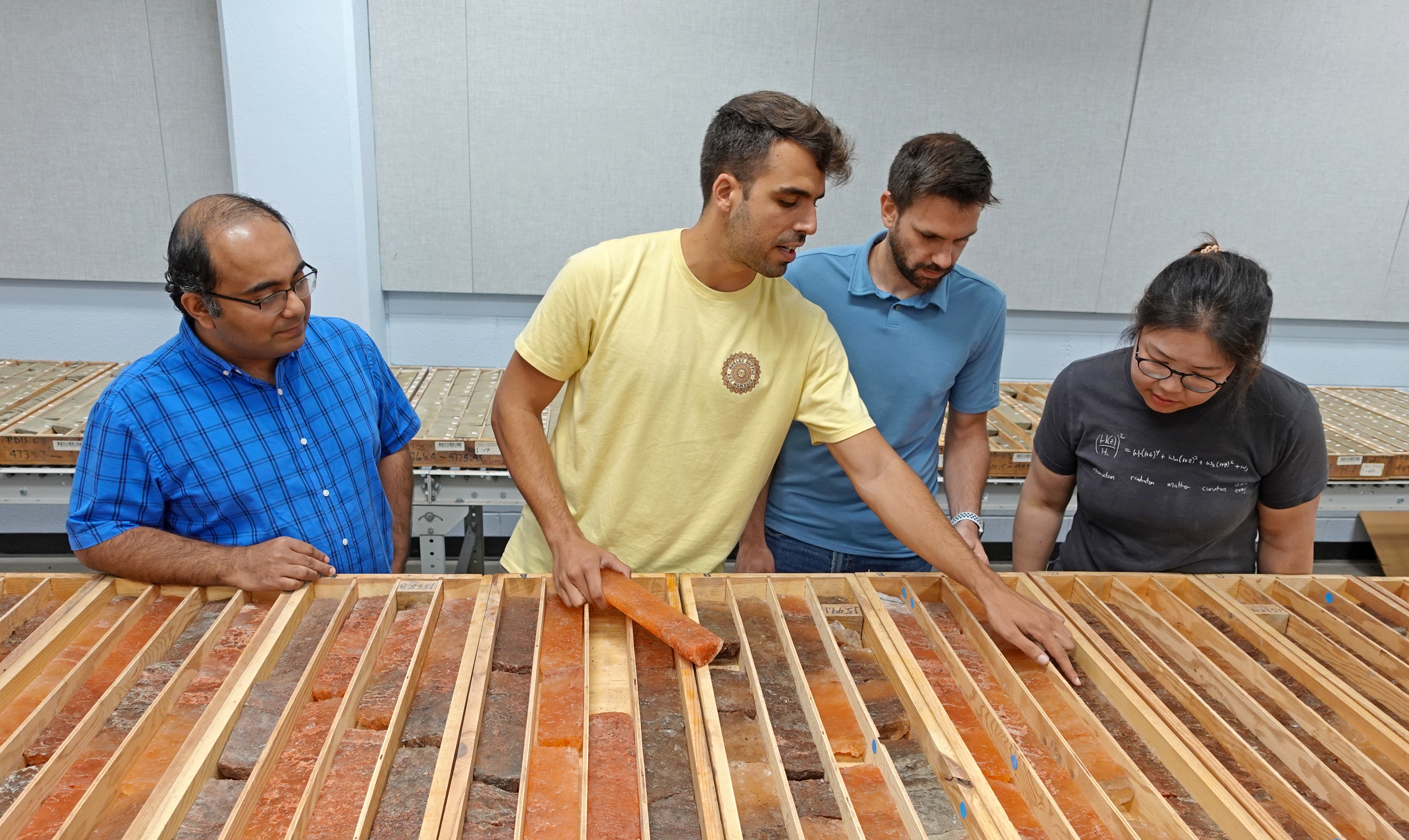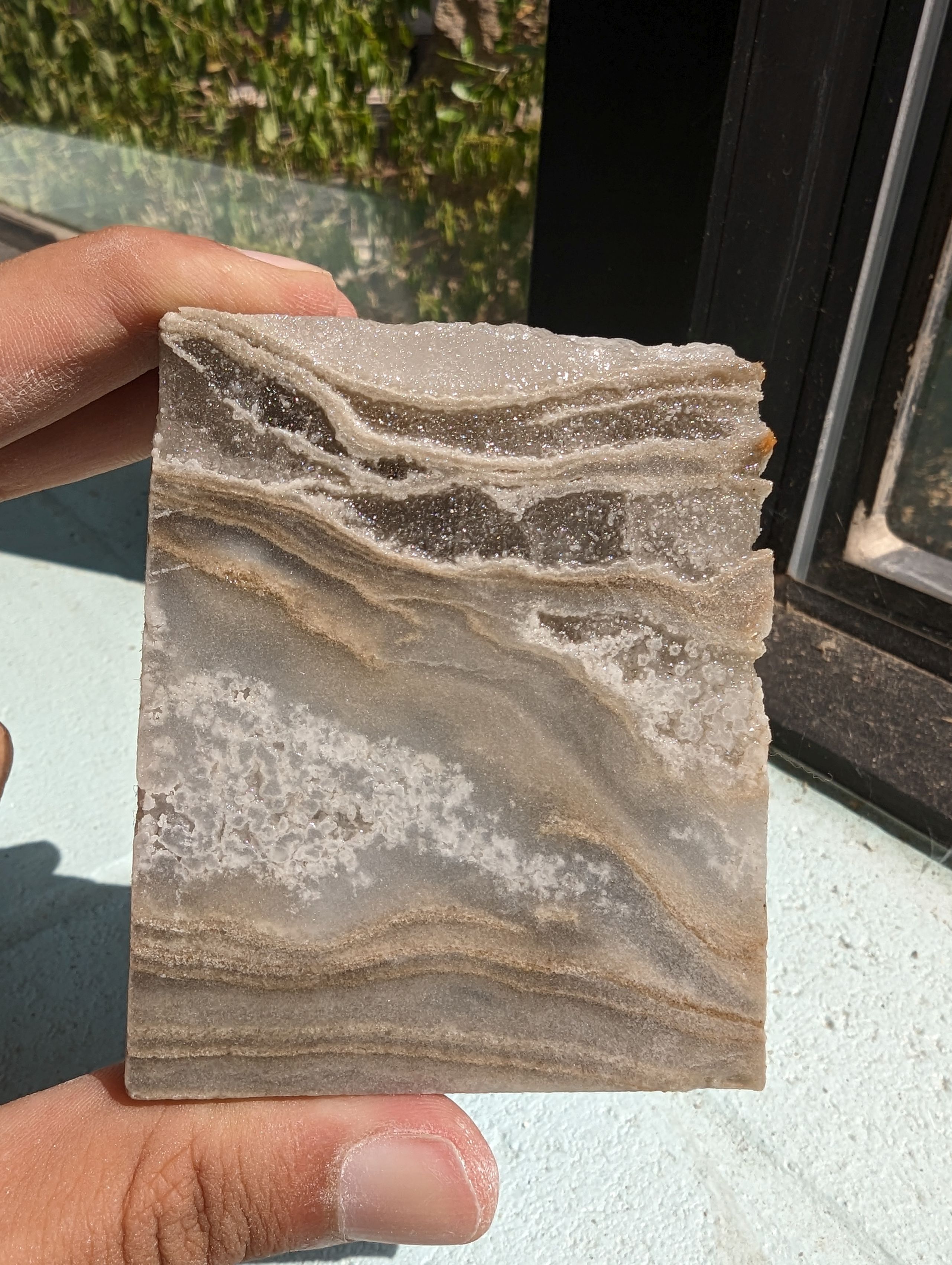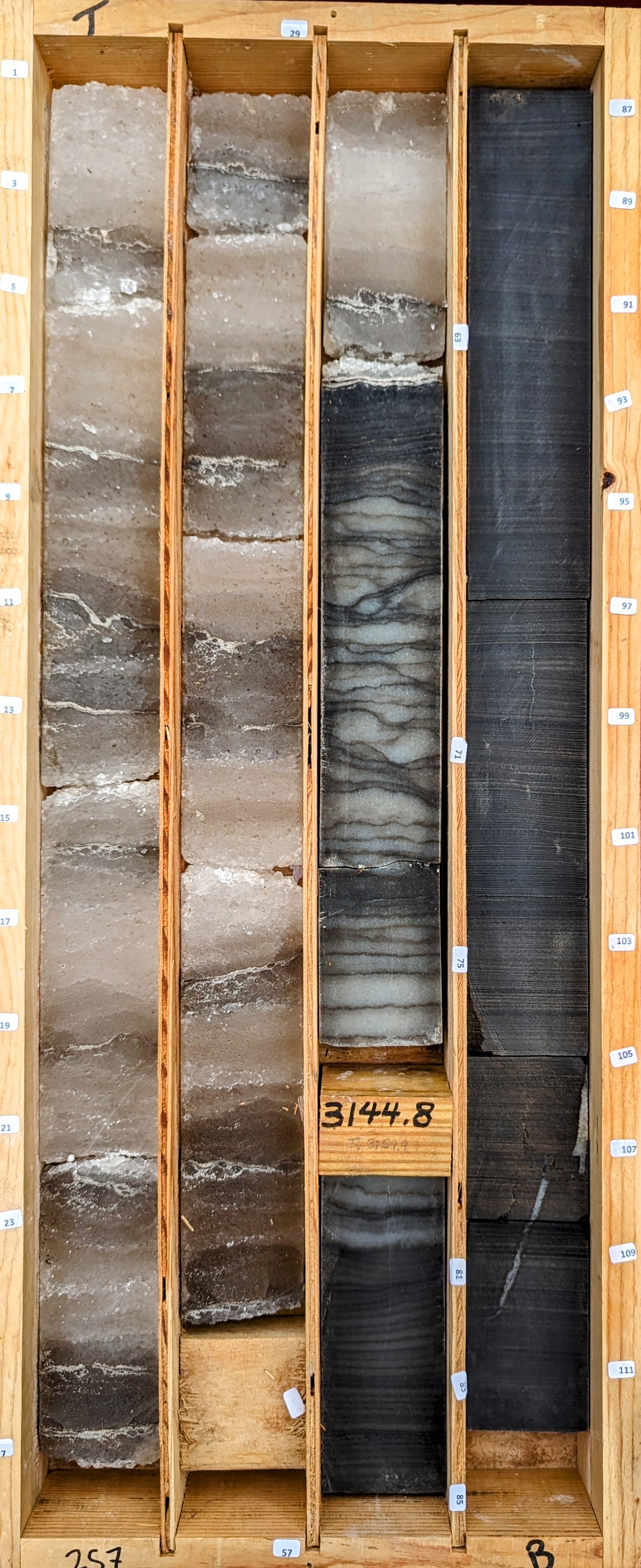Salty Research at the Bureau: Enhancing Energy Storage in the Permian Basin

The State of Texas Advanced Resource Recovery (STARR) program, in collaboration with the GeoH2 industrial affiliates program at the Bureau of Economic Geology, has been pursuing comprehensive salt formation characterization for the Castile and Salado Formations in the Permian Basin of West Texas. STARR researchers intend to characterize these geologic formations to identify areas that are suitable for the construction of salt caverns.
Salt caverns are created by solution mining and can store a wide variety of products, including liquid and gaseous hydrocarbons as well as hydrogen. Solution mining has also been used to produce potash and other salts with industrial uses. The U.S. Strategic Petroleum Reserve stores liquid hydrocarbons in salt caverns within salt domes throughout the Gulf Coast region. The bedded salt formations of the Permian Basin are also suitable to build salt caverns for energy storage.
The Bureau has one of the largest collections of geologic core and cuttings in the world. Among those millions of boxes of rock samples, STARR researchers have located more than 4,000 ft of core from the Castile and Salado Formations in the Delaware Basin, the western part of the Permian Basin. STARR Postdoctoral Fellow Ander Martinez-Doñate is describing thousands of feet of core to record lithologic variabilities that will help unravel the complex depositional history of these units. An accurate description of intraformational intercalations of halite, anhydrate, and other salt minerals with carbonates and mudstones is key for the solution mining process, because vertical and lateral heterogeneities within these units affect salt cavern construction and the ability to store certain products in a given cavern.
Bureau Research Associate Lucy Ko is assisting in the design of a geochemical sampling campaign that will allow the research team to better understand the chemistry of these units and predict how these minerals would interact with stored substances such as hydrogen.

Bureau Research Scientist Shuvajit Bhattacharya and Postdoctoral Fellow Leandro Melani are leading an effort to obtain petrophysical data via high-resolution core scanning. These data will be integrated into the overall research effort.
Research Associate Nur Schuba is interpreting seismic data and establishing well-to-seismic ties that will allow the Permian salt storage research team to better understand the seismic signatures of these units and extend regional mapping efforts across the basin.
Finally, STARR engineer Leopoldo Ruiz Maraggi has designed an application that allows the STARR-GeoH2 team to calculate hydrogen storage capacities in salt caverns and better understand the impact of hydrogen injection and withdrawal cycles.
Preliminary results of this research effort led by STARR Principal Investigator Dr. Lorena Moscardelli will be presented this year in several technical conferences, including the American Association of Petroleum Geologists–Society of Exploration Geophysicists International Meeting for Applied Geoscience & Energy (SEG–AAPG IMAGE) in Houston this August (program here) and the fall 2023 meeting of the Solution Mining Research Institute (SMRI) in San Antonio this October (information here). The salt storage research team is also planning to submit several abstracts to the upcoming European Association of Geoscientists & Engineers Global Energy Transition Conference & Exhibition (EAGE GET) in Paris this fall (information here).
This research would not be possible without access to the Bureau Core Research Center, including access to state-of-the-art laboratory facilities and the talented and dedicated team of technical staff and facility managers that includes Nathan Ivicic, Brandon Williamson, and Rudy Lucero. The Bureau’s core and research facilities are true gems and a resource that will continue to provide valuable data to Bureau and other researchers in the pursuit of high-quality, impactful, and timely research to benefit the State of Texas and society as a whole.
To learn more about STARR and its work, please see the program’s website: https://www.beg.utexas.edu/research/programs/starr
